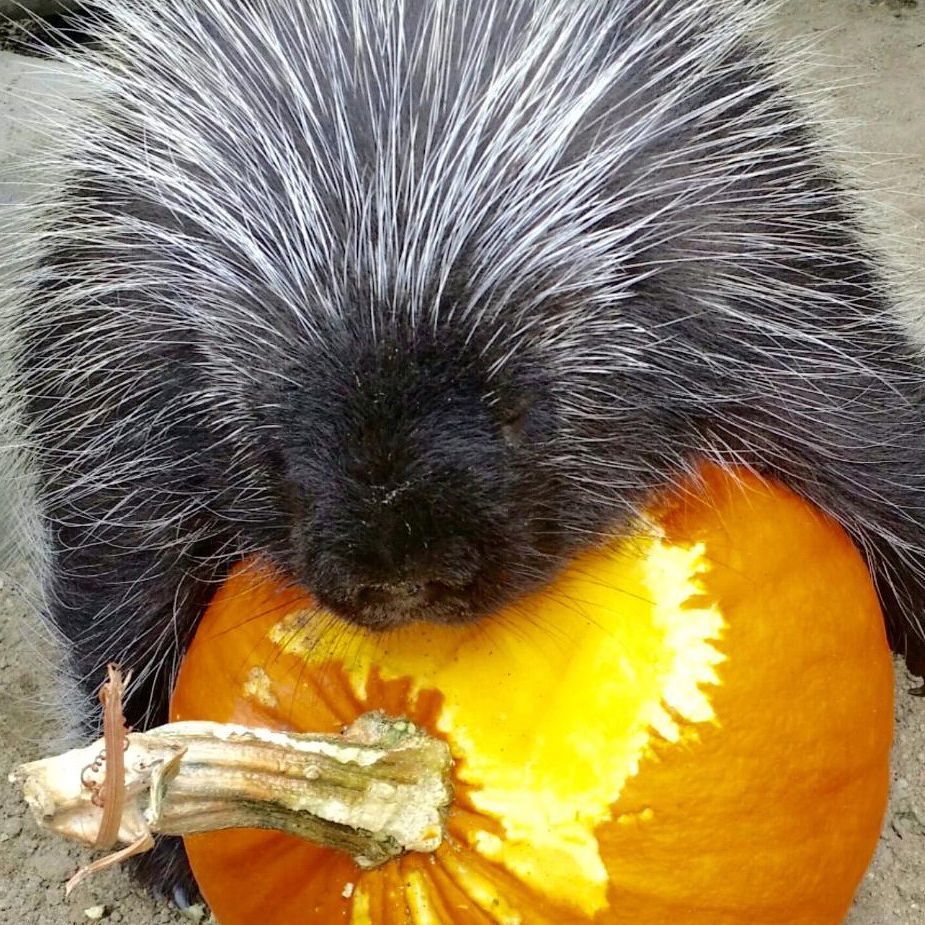Profile | Salix

-
BirthdayFemale, born spring 2018
-
SpeciesNorth American Porcupine
Erethizon dorsatum -
Professor ofForest propagation and preservation
-
Field of StudyGirdling and quills
-
Food and Vet Care$345 per month | $4140 each year
About the species
RANGE | The North American Porcupine has a very large range. They can survive in a variety of climates and elevations. Primarily they live in coniferous and mixed forested areas in Canada, Alaska, and much of the northern and western United States. There is a small population in the eastern United States.
FUN FACTS | These animals are the second largest North American rodent in size, the beaver is slightly bigger. In addition, the range of this species is the northernmost of all porcupines. They are covered with thick dark brown fur to help them hide in the trees and shadows and also have long, lighter colored guard hairs. Underneath their coarse fur, these animals have up to 30,000 characteristic quills, starting at the back of the neck and extending to their tail. The quills of this animal can grow up to a few inches long, about the size of a plastic toothpick, and are barbed like an arrow. The quills of these animals are covered with a topical antibiotic, mainly intended for self-defense if the porcupine is accidentally poked by its own quills. quills are so lightly attached, they come off easily when a predator encounters them. When the quills enter the skin of a predator, they work their way further into the skin at a rate of 1 mm an hour. Porcupines are more likely to flee predators, but if cornered, it will erect its quills, turn its back to the attacker and lash its barbed tail. Once thrust into another animal's skin, these spines become embedded in their paw or mouth which makes survival a real struggle.
Like the beaver, the winter diet of these herbivorous animals mainly consists of tree bark, often feeding on the cambium layer of a single tree until it dies before moving onto another. During the rest of the year, they feed upon green vegetation such as seeds, grasses, leaves, twigs and fruits as well as supplementing their diet by gnawing on occasional bones and antlers that are rich with mineral nutrition. Their powerful front teeth, called incisors, enable them to constantly chew and gnaw. They are constantly growing and are orange, due to rust oxide in them which helps them to be hard and durable.
Meet Salix
Salix was born at a wildlife centre after her mother was brought in and deemed non-releasable. Since she could not be taught how to survive in the wild, they began looking for a placement for her. Originally, she was going to go to a local zoo but they decided they were only interested if the baby was male. SHE is a female so they reached out to us and we are now her forever home.
Salix is SASSY. When we clean her den, she waddles around her enclosure as she throws her tantrum. She loves to wrestle with small stuffed animals, so we have a collection of them just for the porcupines- all pink pigs- so nobody else gets quilled! She loves to climb up and down real branches and logs, as well as the browsers we make from old firehose.Her favorite activity is going on walks to find blackberry bramble and munch on those prickly leaves. She also loves pumpkin blossoms, as well as the actual pumpkins, chewing on both inside and out!
Likes
She loves small stuffed toys that she can pick up and manipulate. Her toys have to be heavy duty, since their chewing can be quite destructive, and all of the stuffed animals for our porcupines are pink pigs of various sizes so they can be kept separate to protect the other animals from quills. She loves rodent and rabbit chew toys, often made with willow and alfalfa, that we typically hang in her enclosure to entice her to climb since it is a natural behavior.
Wishlist
-
Dog toysSome dog toys are safe to give porcupines—such as the Ho-lee roller toys and heavy duty stuffed toys.
-
Natural woodfresh cut, non-sprayed branches from maple, oak, willow, birch, pear, or apple trees
-
Welding glovesOk, we admit it—these are for us!
-
Travel carrierto leave in enclosure for evac training